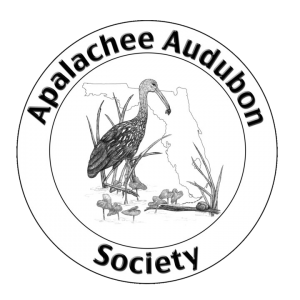By Peter Kleinhenz
My first hike in Florida took me to an improbable place. I hiked through recently-burned sandhill, through shaded steephead ravines, and back up through a scrubby oak forest in The Nature Conservancy’s Bluffs and Ravines Preserve. All the while, I had my head down looking for snakes or way up while looking for birds. The cliff seemed to come out of nowhere. Before I knew it, I was looking out to the horizon that seemed hundreds of miles away.
The view from Alum Bluff. Photo by Rob Williams
I was looking out over the upper Apalachicola River floodplain from Alum Bluff. This rise above the chocolate-brown waters of the Apalachicola River represents the highest cliff in Florida. The precipice descends 130 feet to the river. From its heights, you can see the shadows of gar swimming in the water and flattened shells of moving with the current. No buildings mar the view looking west. It’s just forest.
A recent change in ownership has left this floodplain forest, and nearly 40,000 acres of similar floodplain forest, steephead ravines, and upland forest available for protection. All told, over half of the non-tidal portion of the riparian area of the Apalachicola River transferred to new ownership. With it comes new opportunities.
Well-managed sandhill habitat in the upper Apalachicola River basin.
Apalachee Audubon, The Nature Conservancy, and Apalachicola Riverkeeper have all suggested that the state of Florida preserves this species-rich land through a conservation easement. Conservation easements give land owners benefits for leaving portions of their land undeveloped. The state would theoretically compensate The Forestlands Group, the new owners.
The legislature recently passed a budget that provided the Department of Environmental Protection (DEP) a grand total of $0.00 for land purchases in 2017-2018. Over 70% of Florida voters supported Amendment 1, which was originally understood to support land acquisition efforts. Instead, the Amendment has mainly funded water infrastructure projects and agricultural initiatives. The recent budget left many scratching their heads but environmental groups, such as ours, have not given up when it comes to getting biodiverse land conserved.
On June 16, a presentation will be held regarding whether or not the Acquisition and Restoration Council of DEP should review the property for inclusion on its list of potential properties to purchase. Want to help? There will be opportunities for letter-writing, phone calls, and public participation in hearings. The more people that show support, the more likely we will be able to work with our partners to make this easement happen.
We hope you will help us ensure that the prothonotary warblers that sing, the wood ducks that nest, and maybe even the ivory-billed woodpeckers that elude us may continue to do so in this important tract of land indefinitely. We’re talking about Florida Forever, after all.


